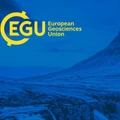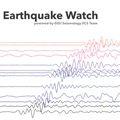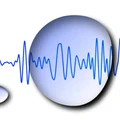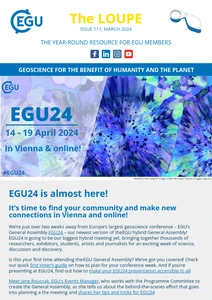President: Alice-Agnes Gabriel
(sm@egu.eu)
Deputy President: Philippe Jousset
(philippe.jousset@gfz-potsdam.de)
Seismology as a discipline contributes to a large variety of both basic and applied scientific fields, and addresses urgent questions in the context of both natural resources and natural hazards. The Seismology (SM) Division at EGU aims to strengthen its interdisciplinarity and impact by driving the development from static to dynamic geophysical models, by conducting research that spans from acquisition parameters to petrophysical properties, and by supporting the transition from geo-modelling to geo-technical application. Thereby, the SM Division will be increasingly able to make relevant forecasts and provide valuable information to tackle future challenges in securing natural resources and quantifying natural hazards.
The EGU offers an open and widely recognized forum for discussing a wide range of scientific questions and conducting corresponding research. The impact of geosciences to society has probably never been as high as today. Therefore, we pursue broad and open-minded approaches to tackle important research topics, while simultaneously engaging in interdisciplinary collaborations for the benefit of humanity and our planet.


Get involved!
Follow us on Facebook and our Seismoblog!
Sign up for the (low traffic) seismo-Email list.
For current medal and award committees please see Awards & medals committees page.
Recent awardees

- 2024
- Beno Gutenberg Medal
The 2024 Beno Gutenberg Medal is awarded to
Jaroslava Plomerová for contributions to the development of sophisticated methodologies in the characterisation of anisotropic domains in the upper mantle, and their application to imaging of the lithosphere in Europe.
Read more

- 2024
- Division Outstanding Early Career Scientist Award
The 2024 Division Outstanding Early Career Scientist Award is awarded to
Stephen P. Hicks for exceptional contributions to seismology, including innovative seismic imaging techniques, studies of earthquake processes as well as Earth structure, science communication and community building.
Read more

- 2023
- Outstanding Student and PhD candidate Presentation (OSPP) Award
The 2023 Outstanding Student and PhD candidate Presentation (OSPP) Award is awarded to
Jessica Allen Spatiotemporal Variation in Low Frequency Earthquake Recurrence on the San Andreas Fault
Read more

- 2023
- Outstanding Student and PhD candidate Presentation (OSPP) Award
The 2023 Outstanding Student and PhD candidate Presentation (OSPP) Award is awarded to
On Ki Angel Ling Enhancement of Seismic Phase Identification using Polarization Filtering and Array Analysis
Read more
Latest posts from the SM blog

Seismology Division Events for EGU24
Hello fellow Seismologists! The exciting time of the EGU General Assembly is upon us, and we are looking forward to reconnecting with all of you at EGU24. Through this blog, we would like to bring your attention to the events that are organised by the Seismology Division and ECS Representatives of the Seismology Division during EGU24. Grab your calendar, and make sure to come and meet us on many of these events! Sunday April 14th 15:00-18:00 – ECS Icebreaker (CopaBeach …
Read more

Earthquake Watch: Seismicity in the Reykjanes Peninsula, Iceland
For this Earthquake Watch we are very happy to have Yesim Cubuk-Sabuncu write about the seismicity around the recent eruptions in the Reykjanes Peninsula, Iceland! Yesim is a postdoctoral researcher in seismology at the Icelandic Meteorological Office, Service and Research Division since 2019. She obtained her Ph.D. in Geophysical Engineering at the Istanbul Technical University, Turkey in 2016. Let’s dive into it! Iceland, also known as the land of fire and ice, hosts 32 Holocene volcanoes (Global Volcanism Program, 2023). …
Read more

Seismology Job Portal
On this page, we regularly update open positions in Seismology for early career scientists. Do you have a job on offer? Contact us at ecs-sm@egu.eu Please, note that other available research positions are displayed on the EGU Jobs Portal. Latest open positions: Postdoctoral Fellow (Earthquake Hazards) Institute: The University of Texas Institute for Geophysics (UTIG) Starting: January 2024 Duration: 2 years Deadline: – More details PhD in Stress Characterization Institute: ETH Zurich Starting: June 2024 Duration: 4 years Deadline: 29th …
Read more

Hydro-Seismology: New perspectives on the water cycle in the context of climate change.
With this article, authors Richard Kramer, Charlotte Bruland, Laura Ermert, Yang Lu and Steffen Birk would like to draw your attention to an exciting topic and their EGU 24 session Hydro-Seismology: seismic insights into Water Resources in the context of climate change! Critical Resource – The water cycle under the influence of the climate change The balance of our planet’s ecosystems is tied to the water cycle, an interplay of processes profoundly impacted by climate change. This cycle combines the …
Read more
Current issue of the EGU newsletter









